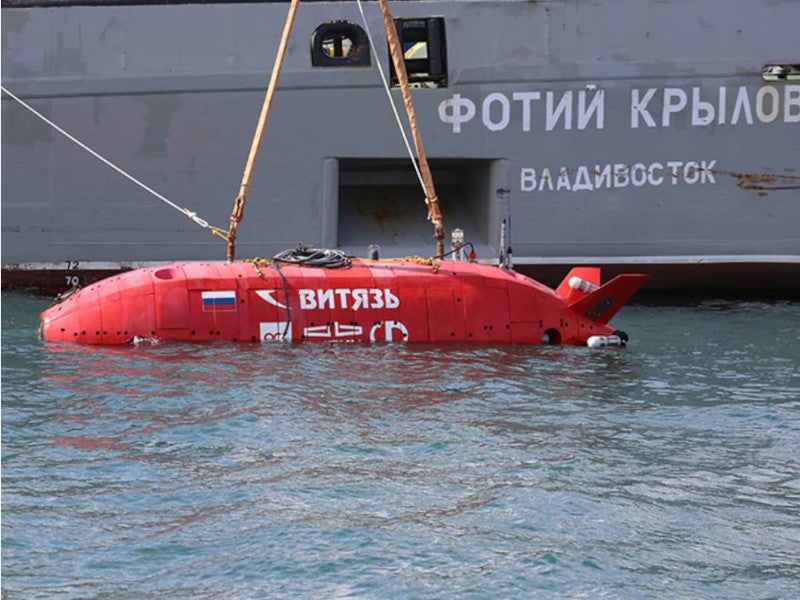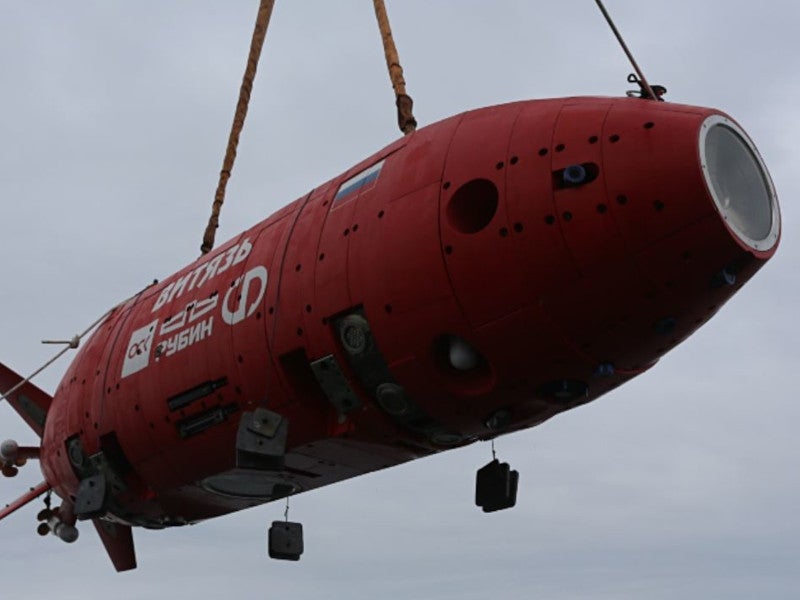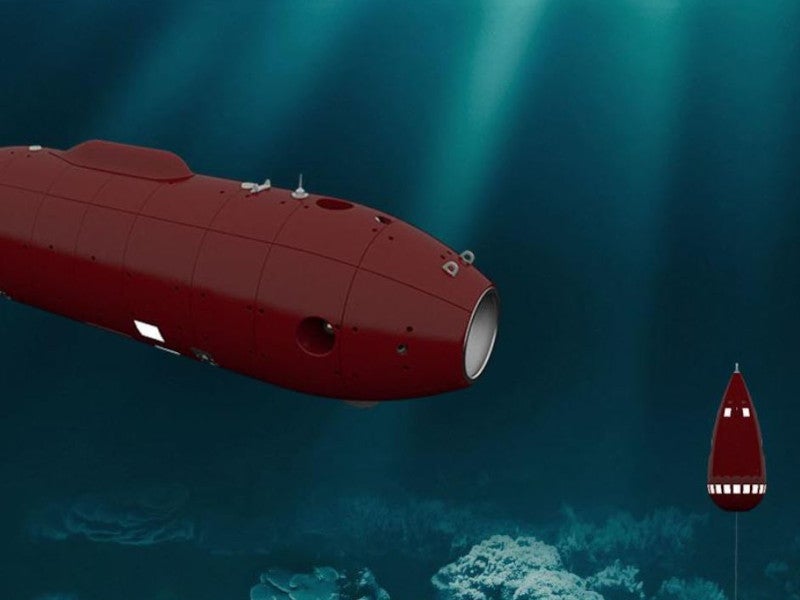Vityaz-D is a new autonomous underwater vehicle manufactured by Central Design Bureau for Marine Engineering (RUBIN).
The vehicle is the world’s first fully autonomous unmanned underwater vehicle (UUV) that reached the World Ocean’s deepest point, the Mariana Trench.
The submersible drone was indigenously developed by RUBIN in association with the Russian Foundation for Advanced Research Projects.
The Russian Navy plans to replace its fleet of unmanned deep-sea submersibles with the Vityaz-D drone for its military operations.
Vityaz-D development
The development of Vityaz-D began in September 2017. The keel-laying ceremony of the UUV was held at the assembly plant of experimental production in November 2018.
In May 2020, the deep submersible vehicle reached the bottom of the Mariana Trench and performed an autonomous mission based on a pre-installed programme. It reached to a depth of 10,028m and installed a pennant in honour of 75th anniversary of the Soviet victory in the Great Patriotic War.
Russia unveiled the submersible vehicle at the Army-2020 international military and technical forum held in Kubinka outside Moscow in July 2020.
The developers announced that the Vityaz-D deep-sea drone will undergo upgrades that include the installation of additional video cameras in August 2020. The upgraded vehicle will be capable of submerging without the help of a bottom station, enabling it to perform autonomous missions with its own communications.
Design and features of Vityaz-D
Vityaz-D is the first crew-less underwater vehicle capable of exploring world ocean’s bed at extreme depths. It is a permeable structure of zero buoyancy and the main load-bearing material is finished using titanium alloys.
The vehicle has a length of 5.7m, a diameter of 1.3m and weighs 5.7t. It can operate at a maximum depth of 12,000m.
The primary components of Vityaz-D include autonomous uninhabited apparatus (ANPA SGP), a deep-sea bottom station (GDS SN) and control room equipment. The vehicle is installed with artificial intelligence (AI), which enables it to avoid obstacles along its course and discover confined spaces.
The vehicle is equipped with four photo / video cameras, a dual-frequency side-scan sonar and four echo sounders. It also comprises a doppler log, shipboard and auxiliary equipment, and environmental parameters sensing system.
The UUV performs operations without an operator by using an on-board control system, which implements control algorithms.
Vityaz-D communication systems
Vityaz-D handles communications through different channels, including sonar, satellite and UHF communications, as well as through Wi-Fi channel.
The data gathered by deep submersible vehicle is transmitted to the mother vessel and the bottom grab station through a hydro-acoustic channel.
Missions
The underwater vehicle is also capable of conducting search and bathymetric survey of the area, sonar survey of the bottom topography, as well as measuring hydrophysical parameters of the marine environment.
It is also used to demonstrate new technologies for developing innovative facilities and supporting scientific and technological advances in the development of underwater space of seas and oceans, using indigenous high-tech R&D products.
The underwater drone can be deployed in search and research (SAR) missions on the seabed layer, as well as on the bottom of oceans at depths up to 12,000m. It is also used to explore AUV production technologies and materials for future AUV systems that can operate in extremely deep waters of the oceans.
Vityaz-D propulsion and performance
The underwater vehicle is powered by four main electric power units and ten electric thrusters. The submerged speed of the Vityaz-D vehicle is 1m/s, while the maximum endurance is 24 hours.




